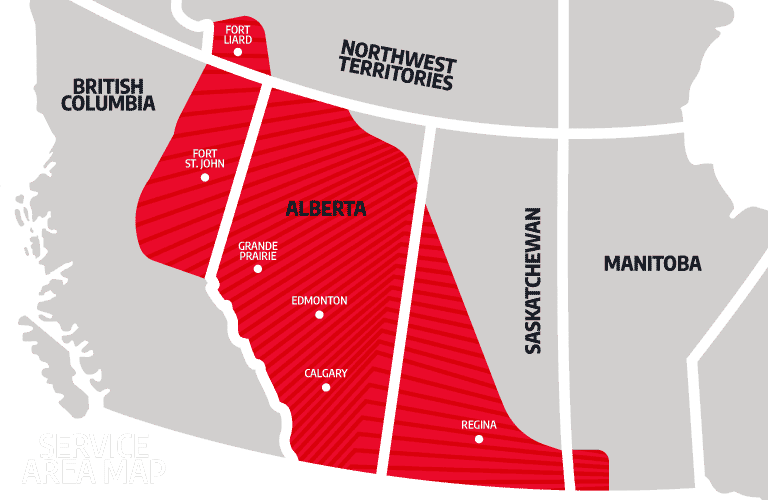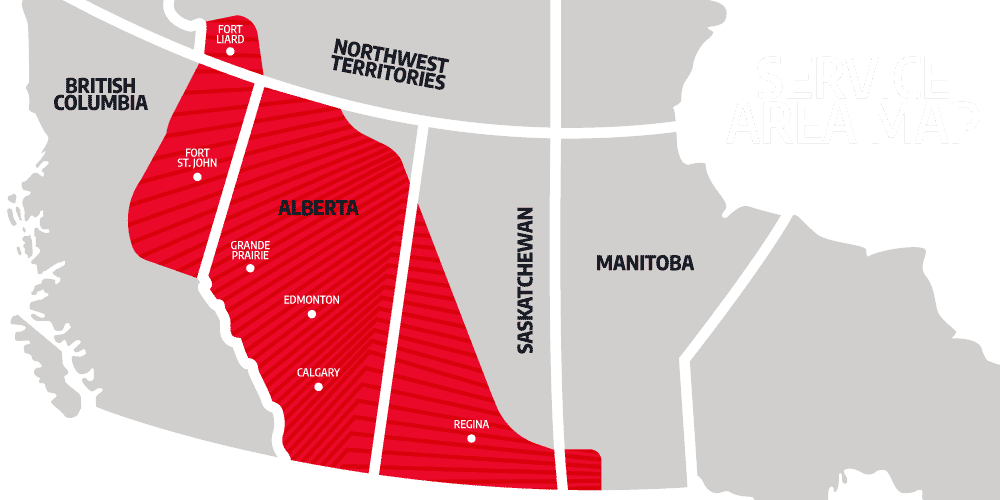Step Rate Injectivity Testing
A step rate injectivity test (SRT), a diagnostic fracture injection test (DFIT), is performed by inserting a pumping unit to receive fluid injected into the well and controlling its pressure. The pressure of the injection fluid is increased to a predetermined pressure by using the pumping unit to determine the fluid flow. The fluid is pumped continuously until a stable flow rate is achieved. Step rate testing aims to find the maximum wellhead injection pressure and rate for optimal zonal injection.
The procedure is repeated at incrementally increased pressure points at each side of the fracture pressure, whereby the fracture pressure is accurately determined. Surface Solutions’ high-accuracy and high-resolution equipment are used in disposal wells and water flood programs to maintain data quality.
A step rate injectivity test can be conducted with either water or nitrogen and can be used to determine the fracture pressure in both low and high-permeability formations.
Surface Solutions’ clients depend on us to satisfy AER Directive 65 when submitting disposal well applications. Water flood scheme data is more reliable with real-time interference testing during step rate injectivity tests. As the first oil and gas optimization company to live stream web-based results, Surface Solutions continues to lead industry reporting through new technologies with our extensive cloud-based data systems.
Why a Step Rate Test?
Step rate injectivity testing aims to determine the pressure at which a fracture will multiply or the pressure at which a pre-existing fracture will reopen.
This is used to determine the fracture pressure or formation parting pressure (FPP). The FPP defines the maximum safe injection pressure for disposal or storage wells without fracturing the formation. A step rate injection’s purpose is to incrementally increase the injection rate by comparable time steps.
A fracture will occur at the point when the pressure reaches the FPP. Although the rate increments remain the same, the subsequent injection will cause the fracture to grow, producing smaller increases in the pressure. An acceptable initial injection rate, appropriate time steps, and rate increments are critical to the success of a step rate injectivity test.
Repeated testing can assess in-situ stresses, thermal changes, or shifts in KH associated with thermal effects. The injection is repeated at several rates below the fracturing pressure. The test continues at each rate until stabilization appears to occur. The opening pressure is extrapolated from the change in the slope of the bottom-hole pressure (BHP) versus the injection rate.
Formation fracture should occur during one of the steps, and it is desirable to have several steps below and above the formation parting pressure. For this reason, Surface Solutions collects historical well data and uses stored historical data to design the injection schedule carefully.
Directive 65 - Resources Applications for Oil and Gas Reservoirs
Directive 65 details the process to apply to the AER the required approvals needed to implement a strategy and plan to deplete a disposal well. This directive sets out the application requirements and explains those requirements for most conventional oil and gas reservoir issues considered in an application for AER approval.
From the test design created by our industry-leading experts and the complete execution in the field to the final regulatory reporting, Surface Solutions is well experienced in developing successful and seamless injection and disposal well applications. Our experts will work with you to ensure that your project meets all the requirements and is completed promptly and efficiently.
Step Rate Injectivity Testing Application
Without fracturing the formation, the FPP defines the maximum safe injection pressure in disposal wells and water flood programs. Surface Solutions’ customers use this information to submit documentation to the AER to fulfill Directive 65, Resources Applications for Oil and Gas Reservoirs.
With technological advances in data acquisition, oil and gas producers have access to test data that is flexible and affordable while still maintaining the highest level of data quality. Providing industry-leading support to our customers is just one pillar of the solid business foundation based on leadership and excellent customer service Surface Solutions has built it’s business and reputation on.
Benefits of Step Rate Injectivity Tests
Obtaining good data is the key to any successful wellbore production. Testing step rates is one method for measuring this data, which is useful for identifying the treatment parameters of the operation.
The most important thing is to understand what the data means and how it can be used to improve the safety of disposal wells and water flood programs.
Surface Solutions takes great pride in being able to provide our clients with useful data that is necessary for a successful job. Surface Solutions has a team of experienced and qualified analysts who know how to obtain and interpret the data correctly. The exhaustive regulatory report provided by Surface Solutions, including detailed engineering analysis, holds previous log interpretations for seamless submission to the AER.



